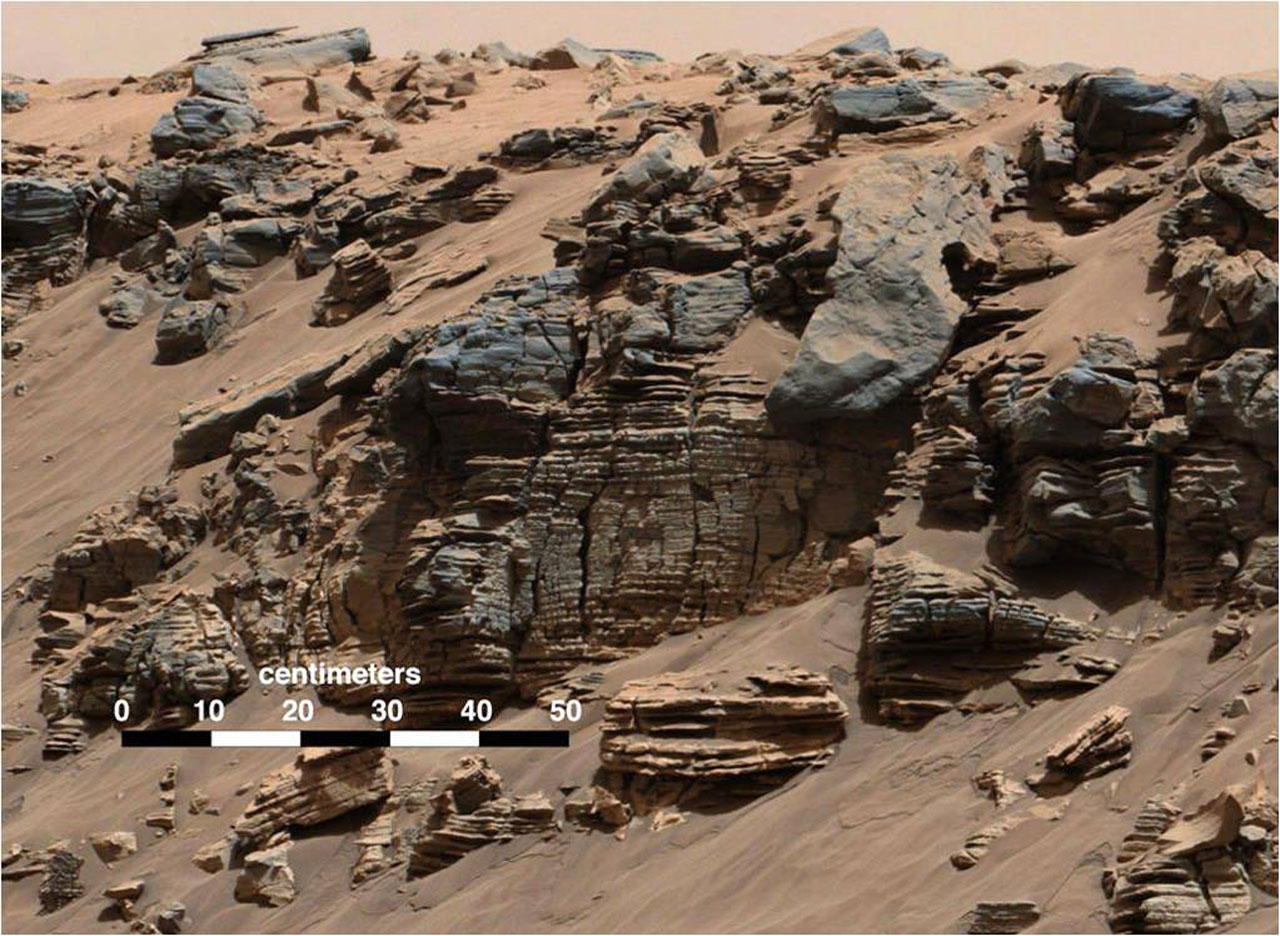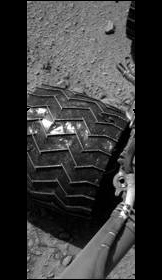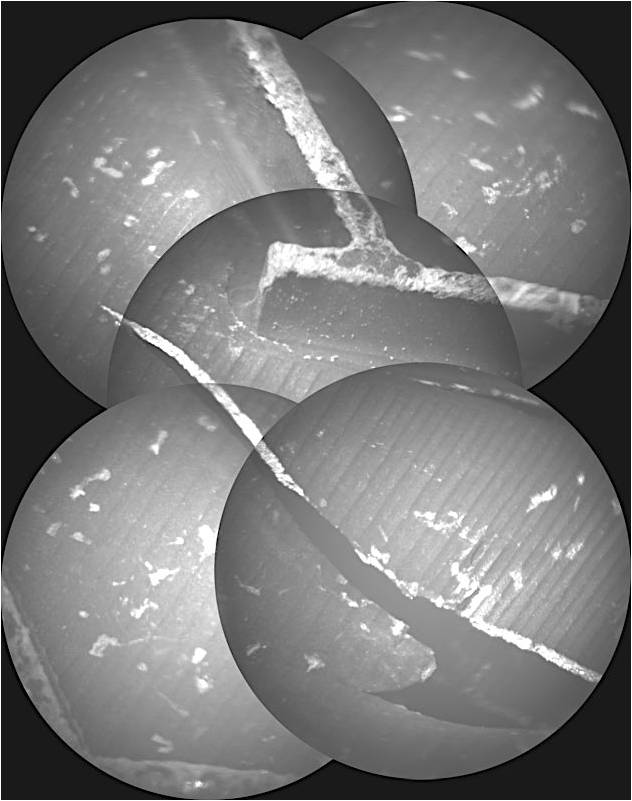
Could Mars Rover Curiosity's Wheel Damage Be Caused by Corrosion?

A research team has published some intriguing work in the journal Nature Geoscience regarding transient liquid water and water activity at Gale crater on Mars – the exploration zone of NASA's Curiosity rover.
Led by F. Javier Martín-Torres of the Instituto Andaluz de Ciencias de la Tierra in Granada, Spain, the group analyzed the relative humidity, air temperature and ground temperature data from the Curiosity rover at Gale crater.
They report the observations support the formation of night-time transient liquid brines in the uppermost 5 centimeters of the subsurface that then evaporate after sunrise. There is an active exchange of water at the atmosphere/soil interface.
Consequences for Mars life

What's that mean for microorganisms on Mars?
The team explains that the water activity and temperature are probably too low to support terrestrial organisms.
While the potential for liquid water has now been found, it is not likely that life will be found on Mars. The Red Planet it is too dry, too cold and the cosmic radiation is so powerful that it penetrates at least one meter into the surface and kills all life … at least life as we know it on Earth, adds team member, Morten Bo Madsen, associate professor and head of the Mars Group at the Niels Bohr Institute at the University of Copenhagen in an Institute press statement.
Perchlorates are widespread on the surface of Mars, the research team explains, "and we expect that liquid brines are abundant beyond equatorial regions where atmospheric humidity is higher and temperatures are lower."
Get the Space.com Newsletter
Breaking space news, the latest updates on rocket launches, skywatching events and more!
Corrosive interaction

In supplemental research published online April 13 in Nature Geoscience, the scientists point out that — given the strong oxidative character of perchlorate ions and their by-products — their presence could cause "corrosive interaction" of brines with spacecraft materials.
Indeed, Curiosity wheels show significant damage at Gale crater. That damage may be compared with corrosion in aluminum by different salts, the researchers suggest.
The anodized protection of the aluminum wheels may protect just the upper few nanometer layers of the wheels, but the abrasion may wear out the external protecting layer and expose the internal aluminum to corrosion.
"The presence of chloride and perchlorate anions in brines may add stress to the aluminum wheels through pitting corrosion of this or other future Martian exploration platforms," the research team concludes.
For detailed information on this work and supplemental information, visit:
http://www.nature.com/ngeo/journal/vaop/ncurrent/full/ngeo2412.html
Leonard David has been reporting on the space industry for more than five decades. He is former director of research for the National Commission on Space and is co-author of Buzz Aldrin's 2013 book "Mission to Mars – My Vision for Space Exploration," published by National Geographic, with a new updated paperback version to be released in May. Follow us @Spacedotcom, Facebook and Google+.
Join our Space Forums to keep talking space on the latest missions, night sky and more! And if you have a news tip, correction or comment, let us know at: community@space.com.

Leonard David is an award-winning space journalist who has been reporting on space activities for more than 50 years. Currently writing as Space.com's Space Insider Columnist among his other projects, Leonard has authored numerous books on space exploration, Mars missions and more, with his latest being "Moon Rush: The New Space Race" published in 2019 by National Geographic. He also wrote "Mars: Our Future on the Red Planet" released in 2016 by National Geographic. Leonard has served as a correspondent for SpaceNews, Scientific American and Aerospace America for the AIAA. He has received many awards, including the first Ordway Award for Sustained Excellence in Spaceflight History in 2015 at the AAS Wernher von Braun Memorial Symposium. You can find out Leonard's latest project at his website and on Twitter.









